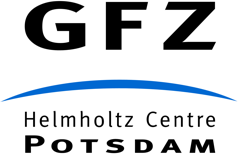
Binayak Ghosh
HEIBRiDS PhD-candidate in Geo.DataScience
#InSAR #Machine learning #Remote Sensing
Online Learning and Decision Making for Real-Time Analytics of Synthetic Aperture Radar (SAR) Data
Supervisors: Prof. Dr. Mahdi Motagh (GFZ) and Prof. Dr.-Ing. Setareh Maghsudi (TU)
Project Outline:
The main goal of this project is to develop a generic framework for real-time InSAR data analytics using the theory and methods from online machine learning and sequential decision making, and to design efficient algorithmic solutions for the retrieval of geophysical signals from SAR measurement. In particular, the concentration is on SAR data from Sentinel-1 satellite.
For the retrieval of geophysical signal from InSAR time-series, the data should be classified, clustered and cleaned, performed by data analytics, to reliably detect anomaly changes and improve susceptibility in the areas affected by deformation due to natural and manmade hazards. In the stateof-the-art literature for exploiting InSAR time-series data, the separation of geophysical signals from noise artifacts such as atmosphere and decorrelation can be divided into two main parts: (i) data processing for efficient estimation of the phase considering long stack of the data; and (ii) data analysis and decision. To reduce the huge measurements data, an online learning platform can utilize the results of past analytics to decide, on the fly, which measurement is cost-worthy. Moreover, feature selection plays an important role in managing the results and their contribution to susceptibility maps. In a feature (attribute) selection problem, the goal is to assign each data cluster a set of features, which best describes it. Generally, the set of features is very large; Nonetheless, the features assigned to each cluster might be correlated, in the sense that similarity/dissimilarity of any pair of features (or data) can be used to reduce the dimensionality. In an online learning platform, such correlations are learned/inferred, given the results of past analytics, and are used to reduce the dimensionality. In addition, to reduce the huge volume of InSAR point clouds that are obtained by multi-temporal interferometric (MTI) time-series approaches, one solution is to summarize the large data sets by extracting the most important data points which, to a great extent, represents the entire set at least from some specific perspective. The selection of such points in a large volume is however not a trivial task, and depends on many factors such as the actual application.




